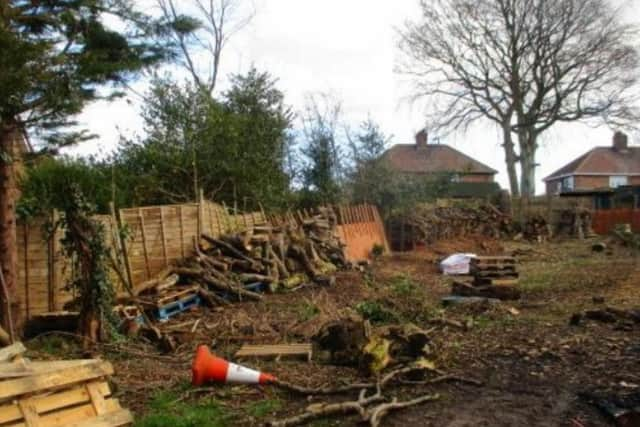It’s not Ingleby Barwick’: New home in former orchard of stately home given green light despite residents’ complaints about 'significant overlooking' and loss of biodiversity
Objections were received from 16 addresses to the plans for a two-storey detached house on land to the south-east of Dew Lane, Ormesby.
The land, which borders homes on Cleveland View and Orchard Way, forms part of a large rear garden attached to an existing property.
Advertisement
Hide AdAdvertisement
Hide AdA report, which recommended the plans be approved by Redcar and Cleveland Council’s regulatory committee, described how mature trees and bushes had been cleared from the land with only a few trees left behind.


It said a new access and driveway would be created against the eastern boundary of the site with a garage attached to the existing property being demolished to make way for its construction.
The house would be in a “L shape” and have three bedrooms, two of which would be en-suite, and be accompanied by a replacement detached garage.
Comments received on the planning application included concern over an increased number of vehicles, a loss of biodiversity from trees having been removed and “significant overlooking” in respect of other properties.
Advertisement
Hide AdAdvertisement
Hide AdSome residents also pointed out that Dew Lane would at one time have formed part of the Pennyman estate – the family with historic links to the nearby Grade I listed Ormesby Hall.
One comment said: “Dew Lane is a quiet street, I see no benefit of building new houses on an established street when there is a housing estate currently being built at the top of Ormesby Bank.”
Another said: “A development like this undermines the whole reason for wanting to live here.
“It’s not Ingleby Barwick, it’s the former orchard of a stately home.”
Advertisement
Hide AdAdvertisement
Hide AdHowever both officers and councillors acknowledged that the site was already surrounded by existing properties which were a mix in both age, size and design.
The report said the land was located within Ormesby’s development limits and the principle of development was acceptable within the aims of the council’s Local Plan policies.
It said: “The proposed dwelling will be modern in design including a large glazed entrance and dormer windows.
“The dwelling will not be readily visible in the street scene of Dew Lane or Cleveland Close, but it will be visible from neighbouring gardens.
Advertisement
Hide AdAdvertisement
Hide Ad“Nevertheless, due to the mix in size and design it is considered the proposed dwelling is in keeping with the varied appearance, character and street scene.”
The report added: “References made to the loss of the natural and historic importance of Dew Lane as previously part of the Pennyman Estate and reference to a stately home orchard are noted.
“This area of Ormesby to the east of Ormesby Hall has been developed over the last 70 years or so with all the land taken over by dwellings and residential gardens.
“Whilst the land can be traced back to being once part of the Pennyman estate, any historical importance has been lost many years ago through neighbouring development.”
Advertisement
Hide AdAdvertisement
Hide AdCouncil officers said that due to the orientation of the planned property there would “not be a sufficient loss of privacy to warrant refusal of the application”.
They also concluded that the number of trips to and from the new home would result in only limited additional activity and disturbance and again this was not sufficient to refuse the application.
Referencing the concern over the loss of trees, the council report said the site was in private ownership, not part of any conservation area, nor were there any tree preservation orders in place, meaning the local authority had no power to take any action.
Some matters raised through the local consultation were also described as not material planning considerations.
